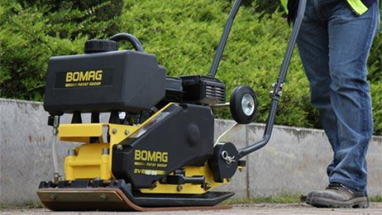When embarking on a construction or landscaping project, choosing the right equipment is crucial for achieving desired results. A plate compactor is often essential for compacting soil, gravel, and asphalt effectively. If you’re considering hiring a compactor plate, understanding the key factors involved in selecting the right one can save you time, money, and effort. Here’s a comprehensive guide to help you make the best choice for your project.
1. Understand Your Project Requirements
The first step in selecting the right compactor plate is to assess the specific requirements of your project. Consider the following factors:
- Type of Material: Different materials require different compaction techniques. For instance, soil, gravel, and asphalt all have unique compaction needs.
- Depth of Compaction: Determine how deep you need to compact the material. Thicker layers may require a more powerful compactor.
- Area Size: Evaluate the size of the area you need to compact. Larger areas may benefit from a wider plate, compactor plate for hire, while smaller spaces may require a more compact model.
Understanding these requirements will guide your selection process.
2. Choose the Right Type of Compactor Plate
Compactor plates come in various types, each suited for different applications. Familiarize yourself with the main types:
- Reversible Plate Compactors: These allow for forward and backward motion, making them ideal for tight spaces and intricate work.
- Single Direction Plate Compactors: Designed for forward movement only, these are typically used for larger areas.
- Vibratory Plate Compactors: These are effective for compacting soil and gravel, utilizing vibration to achieve thorough compaction.
Selecting the right type based on your project needs is essential for efficiency.
3. Assess Power and Performance
When hiring a plate compactor, consider its power and performance specifications. The engine power, usually measured in horsepower, directly affects the compactor’s efficiency. Here are some key points to evaluate:
- Compaction Force: This is often measured in pounds per square foot (PSF). Higher compaction forces are better for denser materials, while lower forces may suffice for lighter applications.
- Engine Type: Compactors can have gasoline or diesel engines. Gasoline engines are typically lighter and easier to maintain, while diesel engines offer more power for heavy-duty tasks.
Choosing a machine that meets your project’s power requirements will ensure effective compaction.
4. Check the Weight and Size
The weight and size of the compactor plate can significantly impact its performance. Generally, heavier models provide more compaction force, while lighter models are easier to maneuver. Here are some considerations:
- Weight Range: Compact models typically range from 100 to 400 pounds. Choose one that balances portability with the necessary compaction force for your materials.
- Plate Size: Wider plates cover larger areas more quickly but may be harder to use in confined spaces. Ensure the size is suitable for the area you are working on.
5. Evaluate Ease of Use
Operating a plate compactor should be straightforward, especially for those who may not have extensive experience with heavy machinery. Look for features that enhance usability:
- Ergonomic Handles: Adjustable and cushioned handles can reduce operator fatigue and improve control.
- Intuitive Controls: Easy-to-understand controls can make the compactor more accessible to inexperienced operators.
Choosing a user-friendly model will enhance safety and efficiency.
6. Consider Rental Terms and Conditions
When hiring a compactor plate, be sure to review the rental terms and conditions. Key points to assess include:
- Rental Duration: Understand the minimum rental period and any penalties for late returns.
- Maintenance and Support: Check if the rental company provides maintenance services or support in case of mechanical issues.
- Delivery and Pickup: Inquire about delivery options and any additional costs associated with transportation.
Clarifying these terms beforehand can prevent unexpected costs and complications.
7. Read Reviews and Seek Recommendations
Before making a final decision, take the time to read reviews or seek recommendations from others who have used the equipment. Feedback from previous users can provide valuable insights into the reliability and performance of specific models. This information can help you make a more informed choice.
8. Compare Costs
Finally, compare the costs of hiring different compactor plates. While it may be tempting to choose the cheapest option, consider the value you’re getting for your money. Evaluate the specifications, performance, and reliability of each model to ensure you’re making a sound investment.
Conclusion
Selecting the right compactor plate for hire is essential for the success of your project. By understanding your project requirements, choosing the appropriate type, assessing power and performance, and considering usability, you can make an informed decision. Additionally, reviewing rental terms, seeking recommendations, and comparing costs will ensure you find the best fit for your needs. With the right compactor plate, you’ll achieve optimal results and a solid foundation for your construction or landscaping project.

